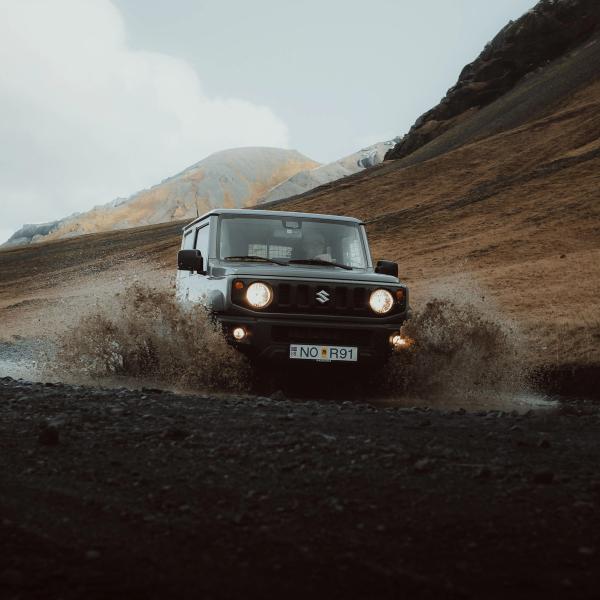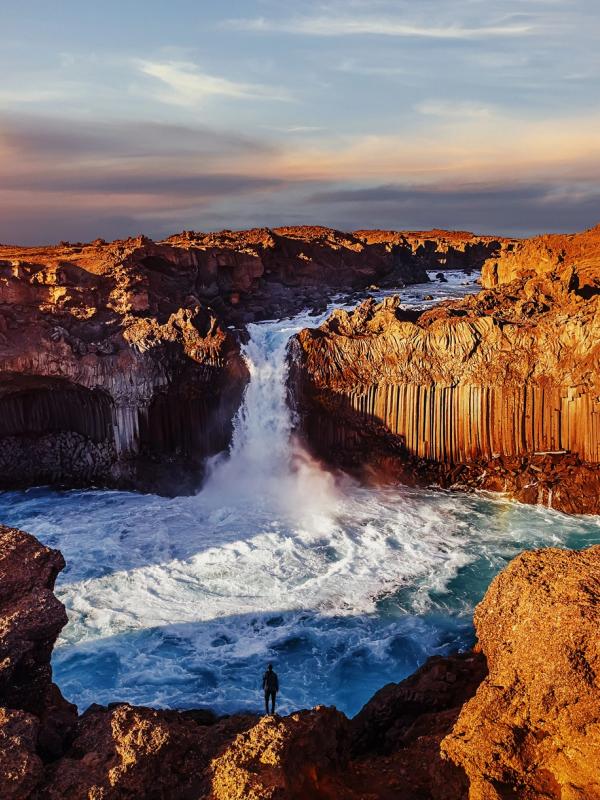
Discovering Aldeyjarfoss: Iceland's Hidden Gem in the Highlands
Aldeyjarfoss might not be as well-known as some of Iceland’s other waterfalls, but it’s definitely one of the most stunning. Located in the Bárðardalur Valley in Northern Iceland, this 20-meter waterfall is surrounded by striking basalt columns, making it a perfect spot for anyone who loves nature or photography. If you’re up for an adventure in a remote area, Aldeyjarfoss is the place to explore. Here’s what you need to know to make your visit great.
Why is Aldeyjarfoss Worth a Visit?
Aldeyjarfoss stands out for a few reasons. First, those towering basalt columns create a dramatic backdrop you won’t find at many other waterfalls. These hexagonal rock formations were shaped by ancient lava flows, and contrast beautifully with the white water crashing down into the pool below. The waterfall is part of the Skjálfandafljót River, which starts from the Vatnajökull glacier and winds through the Icelandic Highlands, carving out valleys and feeding other stunning waterfalls like Goðafoss.
What also makes Aldeyjarfoss special is its remote location. It’s deep in the highlands and only accessible by 4x4 vehicles, so it’s a peaceful spot where you can connect with Iceland’s raw, untouched landscape. If you’re looking to get off the beaten path and see something unique, Aldeyjarfoss is worth the trip.
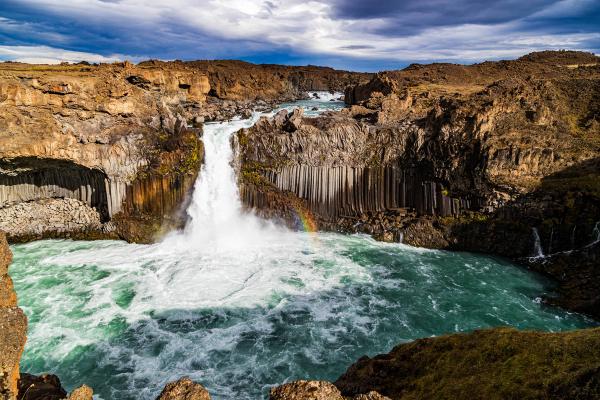
Aldeyjarfoss Facts & Features
Here’s why Aldeyjarfoss is a must-see:
Height and Setting
Aldeyjarfoss drops 20 meters into a rocky basin, surrounded by towering basalt columns. The waterfall’s power comes from the Skjálfandafljót River, fed by the meltwaters of Vatnajökull, Europe’s biggest glacier. The mix of the river’s force and the unique volcanic rock formations makes this waterfall a standout in Northern Iceland.
Geological Significance
The basalt columns around Aldeyjarfoss formed from slow-cooling lava that solidified into hexagonal shapes. This natural process, linked to Iceland’s volcanic activity millions of years ago, has created one of the most photogenic scenes in the country. The dark rock and white water contrast perfectly for an epic photo.
Remote Location
Aldeyjarfoss is in the Bárðardalur Valley, about 40 kilometers from the Ring Road (Route 1). To get there, you’ll need to drive on the F26 Sprengisandur Route, a gravel road that requires a 4x4 vehicle. The rough drive and the waterfall’s remote location make it a true hidden gem in the Icelandic Highlands.
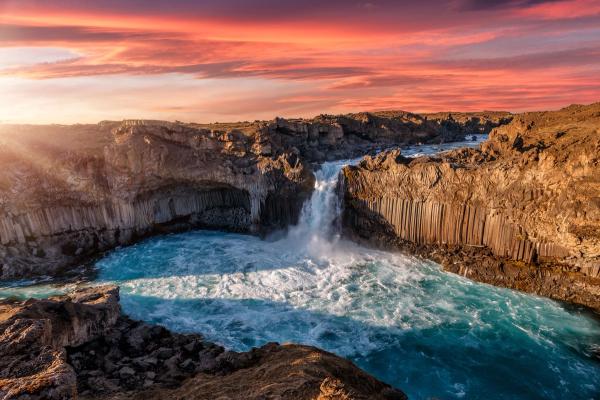
Best Time to Visit Aldeyjarfoss
The best time to visit Aldeyjarfoss is during the summer, from June to August. This is when the F26 road is open and accessible, and the weather is mild, making the hike to the waterfall more comfortable. The long summer days also give you plenty of daylight to explore and capture the waterfall in the best light.
Winter is a different story. The road to Aldeyjarfoss is usually closed due to snow and ice, making the waterfall hard to reach. However, if you’re lucky enough to get there in winter, you’ll find a frozen wonderland, with the waterfall surrounded by snow-covered basalt columns—a scene straight out of a fairytale.
Where is Aldeyjarfoss and How to Get There
Aldeyjarfoss is tucked away in the Bárðardalur Valley in Northern Iceland, so getting there is a bit of an adventure. Here’s how you can reach this remote beauty:
From the Ring Road
- Start on Route 1 (Ring Road) and head towards Akureyri if you’re coming from the west or for Mývatn if you’re coming from the east.
- Turn onto Route 842 and follow the signs toward Bárðardalur Valley. Keep driving on this road until you reach the junction with F26 (Sprengisandur Route).
- Switch to F26 Sprengisandur Route, a gravel road that requires a 4x4 vehicle. This road will take you into the highlands and directly to the parking area near Aldeyjarfoss.
The drive from the Ring Road takes about 1.5 to 2 hours, depending on road conditions and weather. It’s important to check the road conditions before you set out, especially since the F26 can be challenging, even in summer.
The Hike to Aldeyjarfoss
The hike to Aldeyjarfoss is short but sweet, and it offers amazing views along the way. The trail is about 1 kilometer each way, making it a 2-kilometer round trip. The path is easy to follow but rocky, so sturdy shoes are a good idea.
Starting Point
The trail starts at the parking area, right off the F26 road. You’ll follow a clear path that takes you through a rugged landscape of volcanic rock and moss-covered ground. The Skjálfandafljót River will be your guide as it winds through the valley, leading you straight to the waterfall.
Viewpoints
As you hike, you’ll get your first glimpse of Aldeyjarfoss as you approach the edge of the canyon. The basalt columns start to come into view, and the roar of the waterfall grows louder. There are a few great spots to stop and take photos, but the best view is from the base of the falls, where you can see the full height of the waterfall framed by the dramatic basalt formations.
Extended Trail
If you’re up for more exploring, you can hike further along the Skjálfandafljót River. The trail continues upstream, offering more views of the river and the surrounding highlands. This extended hike gives you a chance to fully experience the wild beauty of the Icelandic Highlands.
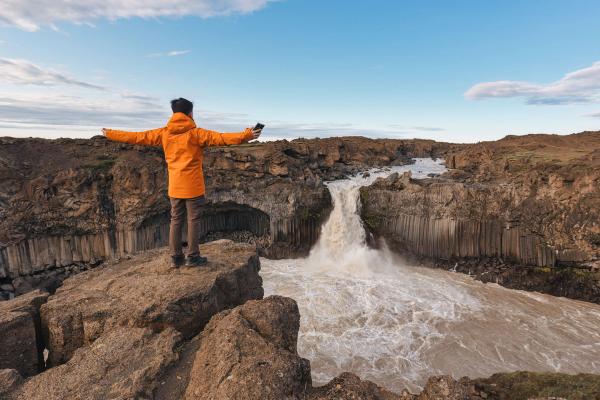
What to Wear When Visiting Aldeyjarfoss
Iceland’s weather is unpredictable, so it’s best to dress in layers and be prepared for sudden changes. Here’s what you should wear:
- Sturdy Hiking Boots: The trail is rocky, and you’ll want good traction.
- Layered Clothing: Easy to adjust as the temperature changes throughout the day.
- Rain Jacket: Iceland is famous for sudden rain showers.
- Hat and Gloves: It can get windy and chilly, even in summer.
- Hiking Backpack: To carry your essentials, water, and snacks.
Surrounding Sites & Things to Do Near Aldeyjarfoss
While Aldeyjarfoss is the main attraction, there are several other amazing spots nearby that are worth a visit:
Goðafoss
Goðafoss, located upstream on the Skjálfandafljót River, is one of Iceland’s most famous waterfalls. It’s much easier to access than Aldeyjarfoss and is a popular stop along the Ring Road. The name “Goðafoss” means “Waterfall of the Gods,” and it’s easy to see why—it’s a wide, semi-circular cascade that’s both powerful and beautiful. There are viewing platforms on both sides of the river, and the paths are well-maintained, making it accessible to everyone.
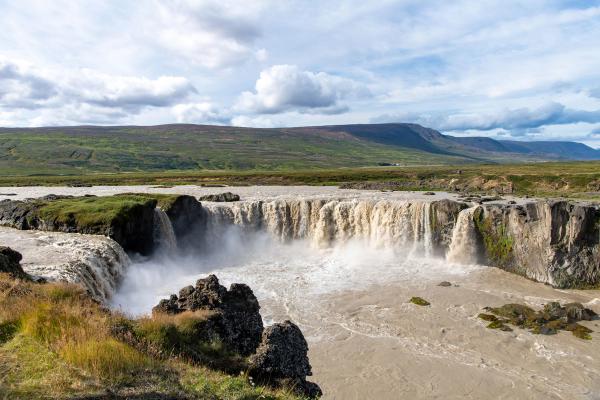
Hrafnabjargafoss
Hrafnabjargafoss is another waterfall on the Skjálfandafljót River, located further upstream from Aldeyjarfoss. This spot is less visited, making it a great option if you’re looking for some peace and quiet. The waterfall is surrounded by jagged lava formations, and the area has a rugged, untouched feel. It’s a perfect place for a picnic or a moment of solitude in nature.
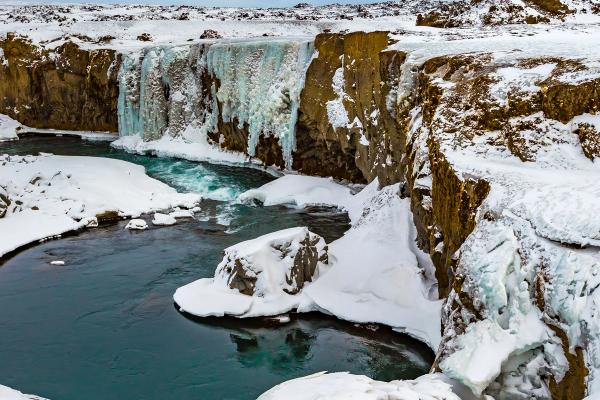
Mývatn
Mývatn is a stunning area about 70 kilometers from Aldeyjarfoss, known for its geothermal activity and birdlife. The landscape here is dotted with volcanic craters, hot springs, and lava fields, creating a surreal, otherworldly environment. Popular spots include the Mývatn Nature Baths, where you can soak in warm, mineral-rich waters, and Dimmuborgir, a maze of twisted lava formations. Mývatn is also a birdwatcher’s paradise, with thousands of ducks and other waterfowl nesting around the lake.
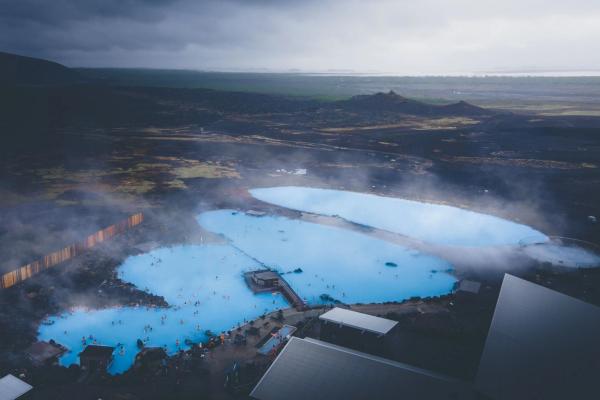
Vatnajökull National Park
Vatnajökull National Park is home to Europe’s largest glacier, and while it’s a bit of a drive from Aldeyjarfoss, it’s worth the effort if you’re into glaciers and epic landscapes. The park covers a huge area, offering everything from glacier hikes to ice cave explorations. The scenery is breathtaking, with massive ice caps, deep valleys, and glacial rivers carving through the land. It’s a place where you can truly feel the power of nature.
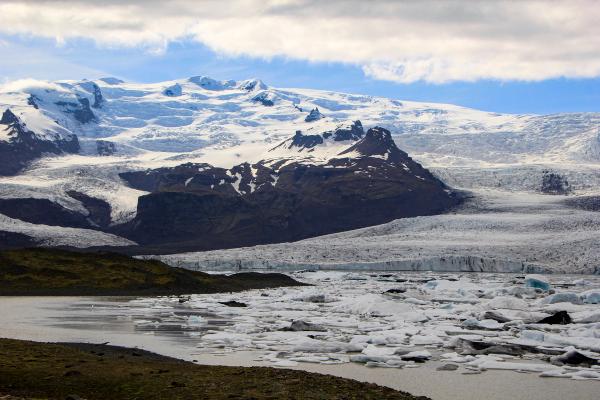
Landmannalaugar
If you’re up for a real adventure, consider making the trek to Landmannalaugar, a geothermal area in the highlands known for its colorful mountains and natural hot springs. The rhyolite peaks here are a mix of reds, yellows, and greens, creating a landscape that’s unlike anything else in Iceland. It’s a hiker’s paradise, with trails ranging from short walks to multi-day treks. After a long hike, you can soak in one of the natural hot springs, surrounded by mountains and lava fields.
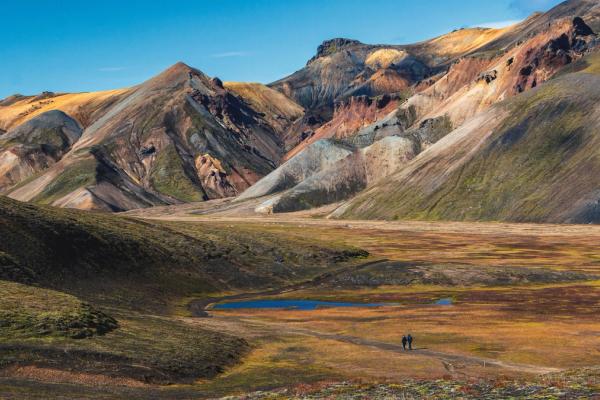
Conclusion
Aldeyjarfoss is a hidden gem in the Icelandic Highlands that offers a mix of stunning scenery, geological wonder, and a sense of adventure. Whether you’re drawn by the unique basalt columns, the roaring waterfall, or the chance to explore one of Iceland’s more remote locations, a visit to Aldeyjarfoss is sure to be a highlight of your trip. With nearby attractions like Goðafoss, Mývatn, and Vatnajökull National Park, you can easily fill your itinerary with some of Iceland’s most incredible sights.

